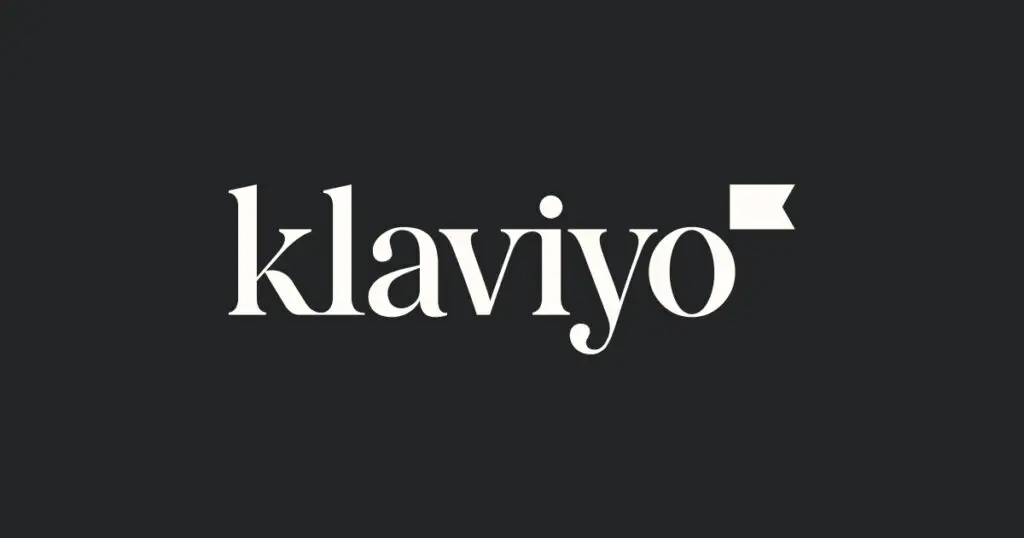Deciphering Blockchain Vernacular: An Extensive Handbook on the Lexicon of Cryptocurrency


In the realm of cryptocurrencies and blockchain technology, we encounter a multifaceted and swiftly evolving landscape brimming with specialized terminology that may appear daunting to novices.
From Bitcoin to smart contracts, and decentralized finance (DeFi) to non-fungible tokens (NFTs), grasping the blockchain wiki/glossary is imperative for those seeking to navigate it proficiently.
Within this article, we shall explore the diverse spectrum of technical lexicon and jargon associated with the world of cryptocurrencies, endeavoring to elucidate and shed light on this captivating sphere.
Table of Contents
Foundations of Blockchain
Blockchain: A blockchain constitutes a distributed, decentralized ledger technology responsible for recording transactions across a network of interconnected computers.
Each transaction becomes part of a “block,” and these blocks are subsequently interlinked in chronological order to form an unalterable “chain.” This immutable ledger forms the backbone of most cryptocurrencies.
Cryptocurrency: Cryptocurrency serves as a digital or virtual manifestation of currency, incorporating cryptographic techniques to bolster security.
Notable cryptocurrencies such as Bitcoin, Ethereum, and Litecoin are well-recognized examples, each with its distinct utility—be it as a medium of exchange, a store of value, or a unit of account.
Bitcoin: Bitcoin, colloquially known as “digital gold,” stands as the inaugural and most renowned cryptocurrency. It took form in 2008 through the endeavors of an enigmatic individual or group operating under the pseudonym Satoshi Nakamoto.
Transactions involving Bitcoin are meticulously documented on the Bitcoin blockchain.
Altcoin: An altcoin denotes any cryptocurrency apart from Bitcoin. Ethereum, Ripple (XRP), and Litecoin exemplify the assortment of altcoins available. The term “altcoin” is a composite of “alternative” and “coin,” signifying their distinction from Bitcoin.
Token: Tokens are digital assets that symbolize ownership of an underlying asset or grant access to specific ecosystems or platforms. These tokens are frequently generated using blockchain technology and serve various functions within decentralized applications (DApps).
Smart Contracts and Platforms
Ethereum: Ethereum stands as a blockchain platform that introduced the concept of smart contracts. Smart contracts represent self-executing agreements with contractual terms inscribed directly into code.
Ethereum empowers developers to craft decentralized applications (DApps) that operate seamlessly on its blockchain infrastructure.
Smart Contract: A smart contract manifests as a self-executing contractual arrangement with the contractual terms explicitly encoded in the code. They are programmed to automatically execute when pre-established conditions are met, negating the necessity for intermediaries in transactions and agreements.
DApps (Decentralized Applications): Decentralized applications materialize as software applications underpinned by blockchain technology. They function across a decentralized network of computers, rendering them impervious to censorship and tampering. Prominent examples encompass DeFi platforms and NFT marketplaces.
Solidity: Solidity serves as a programming language tailored for crafting smart contracts on the Ethereum platform. It extends developers the capability to construct and deploy decentralized applications and customized tokens.
Cryptocurrency Trading and Investment
Exchange: A cryptocurrency exchange functions as a platform where users can procure, vend, and exchange cryptocurrencies. Prominent exchanges encompass Coinbase, Binance, and Kraken, offering users a spectrum of options to engage with digital assets.
HODL: HODL, a whimsical variant of “hold,” has metamorphosed into a colloquialism within the crypto community. It advocates retaining one’s cryptocurrency holdings instead of selling them, often driven by the anticipation of potential price surges.
FOMO and FUD: FOMO, an acronym for “Fear of Missing Out,” and FUD, an abbreviation for “Fear, Uncertainty, and Doubt,” encapsulate the emotional factors influencing cryptocurrency markets. FOMO can precipitate buying frenzies, while FUD can incite panic selling.
Cryptocurrency Wallets
Cryptocurrency wallets assume an indispensable role in the safekeeping, administration, and safeguarding of digital assets.
They manifest in an array of formats, each endowed with unique advantages and trade-offs. Here in lies an exploration of the principal categories of cryptocurrency wallets:
Software Wallets
Desktop Wallets: These are wallet applications that you install on your computer. Examples include Electrum (for Bitcoin) and Exodus. They provide good security if your computer is adequately protected from malware.
Mobile Wallets: Mobile wallets are smartphone apps designed for convenience. Popular options include Trust Wallet, Coinbase Wallet, and MyEtherWallet (MEW). They are ideal for everyday transactions and quick access to your funds.
Web Wallets: Web wallets are online wallets that you can access via a web browser. They are convenient but potentially less secure since your private keys are stored on a third-party server. Examples include Binance Wallet and Blockchain.info.
Hardware Wallets
Ledger Nano S/X: These are physical devices resembling USB drives. They offer a high level of security by keeping your private keys offline, away from potential online threats.
Trezor: Similar to Ledger devices, Trezor is another reputable hardware wallet brand known for its security features.
KeepKey: KeepKey is a user-friendly hardware wallet that supports multiple cryptocurrencies.
A paper wallet is a physical document that contains your public address for receiving cryptocurrency and a private key for spending or transferring it. It’s one of the most secure methods since it’s offline and immune to hacking.
A brain wallet is a unique concept where you remember a passphrase or mnemonic phrase that serves as your private key. It’s crucial to choose a strong and complex passphrase to ensure security.
Multi-signature wallets require multiple private keys to authorize transactions. They are often used in business settings and provide enhanced security against unauthorized access.
Custodial wallets are managed by third-party providers like exchanges. While they offer convenience, they involve trusting the provider with your private keys, which may pose security risks.
ICO (Initial Coin Offering)
An Initial Coin Offering (ICO) is a fundraising method used by cryptocurrency and blockchain startups to raise capital. In an ICO, a project or company issues its native tokens or coins to investors in exchange for established cryptocurrencies like Bitcoin or Ethereum.
ICOs gained significant attention during the crypto boom but have faced regulatory scrutiny in recent years.
Market Cap (Market Capitalization)
Market capitalization serves as a metric employed for gauging the complete value of a cryptocurrency. This metric is derived by the multiplication of the prevailing market price of a cryptocurrency by its overall circulating supply.
Market cap effectively offers valuable insights into the cryptocurrency’s relative magnitude and appeal when juxtaposed with other counterparts.
ATH (All-Time High) and ATL (All-Time Low)
ATH stands for All-Time High, which refers to the highest price ever reached by a cryptocurrency since its inception.
Conversely, ATL stands for All-Time Low, signifying the lowest price ever recorded for a cryptocurrency. These terms are often used to track the historical performance of cryptocurrencies.
Fork
In the world of cryptocurrencies, a fork pertains to a substantial divergence within the blockchain’s protocol, leading to the emergence of two distinct chains, each possessing its own set of unique regulations and ledgers. Forks are generally categorized into two primary types:
Hard Fork: A hard fork initiates an enduring partition within the blockchain, resulting in the creation of two separate and individual cryptocurrencies. A prominent illustration is the Ethereum fork that gave rise to Ethereum (ETH) and Ethereum Classic (ETC).
Soft Fork: In contrast, a soft fork constitutes a backward-compatible enhancement to the blockchain’s protocol. Unlike a hard fork, it does not give rise to a separate chain but instead enforces more stringent regulations on the existing one.
Whale
A “whale” within the realm of cryptocurrencies represents an individual or entity in possession of a significant quantity of a specific digital currency. These whales frequently possess the potential to impact market valuations owing to the substantial magnitude of assets under their control.
Pump and Dump
The phrase “Pump and dump” refers to a manipulative trading tactic wherein the value of a cryptocurrency is artificially boosted (pumped) to lure in unsuspecting investors.
Subsequently, when the price attains a specific threshold, the individuals orchestrating the scheme divest their assets (dump), thereby precipitating a sharp decline in price and incurring losses for other investors.
Tokenomics
Tokenomics refers to the economic and financial principles that govern a cryptocurrency or token’s ecosystem. It encompasses factors such as token supply, distribution, utility, and incentives, all of which contribute to the token’s value and functionality within a blockchain project.
Mining and Consensus Mechanisms
Crypto mining is the process by which new cryptocurrency coins or tokens are created and transactions are validated on a blockchain network. Miners use computational power to solve complex mathematical puzzles, adding new blocks to the blockchain.
Proof of Work (PoW): Proof of Work represents a consensus mechanism that finds application across numerous blockchain networks, including Bitcoin and Ethereum.
It necessitates miners to engage in solving computational puzzles as a means of validating transactions and generating new blocks, thereby bolstering the network’s security.
Proof of Stake (PoS): Proof of Stake, on the other hand, serves as an alternative consensus mechanism. Under this paradigm, validators are chosen to spearhead the creation of fresh blocks and the validation of transactions contingent on the quantity of cryptocurrency they possess and their willingness to “stake” it as collateral. Notably, Ethereum is currently undergoing a transition from PoW to PoS.
Delegated Proof of Stake (DPoS): DPoS, a distinct consensus mechanism, places its reliance on a select few validators who are designated by token holders to assume responsibility for the generation of blocks and the validation of transactions. Noteworthy examples of blockchains employing DPoS include EOS and Tezos.
Decentralized Finance (DeFi) and Yield Farming: Decentralized Finance, often abbreviated as DeFi, signifies the application of blockchain technology and smart contracts to reimagine conventional financial services within a decentralized framework.
This encompasses functions such as lending, borrowing, trading, and the accrual of interest on cryptocurrencies, all without dependence on traditional banking institutions or intermediaries.
Yield Farming Yield farming is a DeFi practice where users provide liquidity to decentralized exchanges and lending platforms in exchange for interest or rewards. It involves moving funds between different protocols to maximize returns.
Liquidity Pool
A liquidity pool serves as a reservoir of capital contributed by users, promoting decentralized trading. Users receive fees and incentives for participating in the pool, which aids in the sustenance of the platform’s liquidity.
NFTs and Digital Collectibles
NFT (Non-Fungible Token): NFTs stand as distinctive digital assets that symbolize ownership of a particular item, content piece, or digital collectible. They are indivisible and cannot be directly swapped on a one-to-one basis, distinguishing them from cryptocurrencies.
ERC-721 ERC-721 is a standard for creating NFTs on the Ethereum blockchain. It defines the rules and functions for creating unique, non-fungible tokens.
Minting Minting refers to the process of creating and issuing new NFTs. Artists, creators, and developers mint NFTs to tokenize their digital creations and sell them to collectors.
Author Bio:
Ethan is a passionate writer with a keen interest in the world of cryptocurrency and technology. With a background in computer science and a love for exploring the latest developments in the digital realm, he brings a unique perspective to his writing.
His articles aim to demystify complex concepts in the crypto and tech space, making them accessible to readers of all backgrounds. When he’s not writing, you can find Ethan tinkering with blockchain projects and staying up-to-date with the ever-evolving landscape of cryptocurrencies.
This post was proofread by Grammarly. Try it – It’s Free!
Millions trust Grammarly’s free writing app to make their online writing clear and effective. Getting started is simple
Email, SMS, and more — Klaviyo brings your marketing all together, fueling growth without burning through time and resources.
Deliver more relevant email and text messages — powered by your data. Klaviyo helps you turn one-time buyers into repeat customers with all the power of an enterprise solution and none of the complexity.







